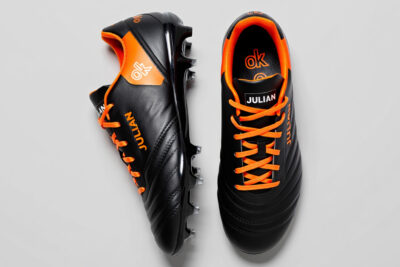
🤔 How to apply heat transfer vinyl on challenging fabrics
🤔 How to apply heat transfer vinyl on challenging fabrics

Applying heat transfer vinyl is usually straightforward, but some fabrics can pose challenges if you do not choose the right material or do not adjust the pressing correctly. The result may be a design that peels off, deforms, or does not integrate well.
In this article, you will see which fabrics are more problematic and how to solve it so that your customisations are perfect.
What to consider about the fabric composition?
The first thing you should check is the composition label of the garment. There, you will see if the fabric is made of cotton, polyester, a blend of both, or nylon.
In principle, 100% nylon does not present problems: vinyls such as Poli-Flex Nylon by Poli-Tape adhere well to it. However, most nylon garments have water-repellent treatments (repelling water and dirt), and this is where issues may arise.
These coatings form a surface layer that hinders the adhesion of the vinyl, causing it to peel off easily even if the pressing has been done correctly.
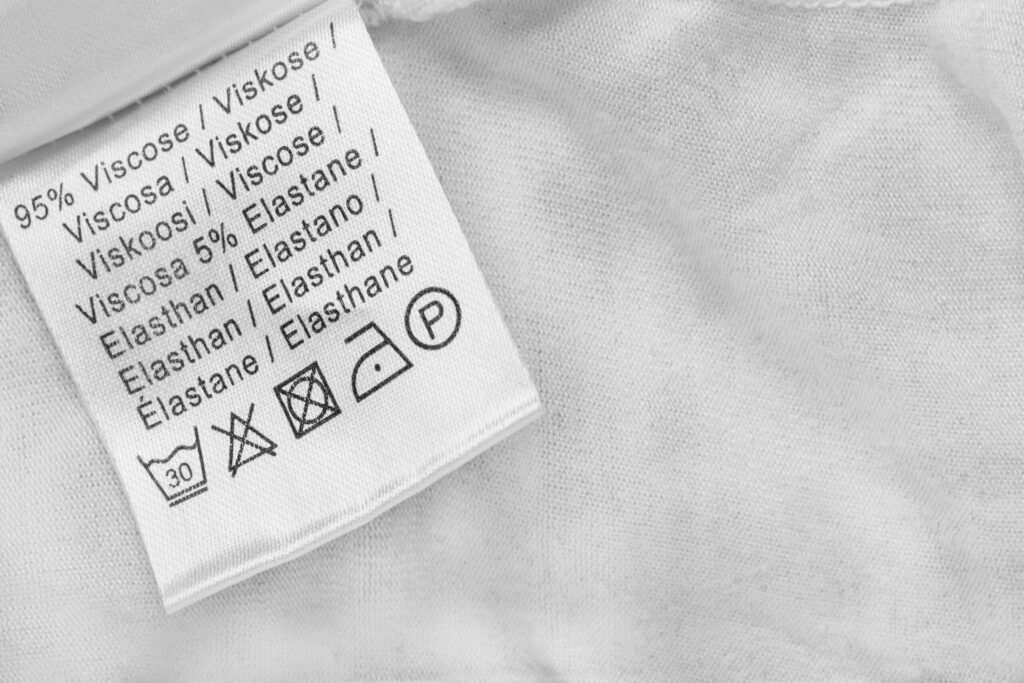
How to tell if a garment is water-repellent?
In most cases, manufacturers do not specify whether the garment has water-repellent coatings or what type of treatment has been applied. These finishes can be made with wax, acrylates, polyurethane, silicone, or even fluorocarbon.
And it’s not just nylon: more and more technical or “functional” fabrics are incorporating these types of coatings, which can prevent the proper adhesion of textile vinyl, especially on finishes like the basic or the flocked.
For this reason, vinyl manufacturers cannot guarantee results on all fabrics, as the performance varies depending on the surface finish, not just the composition.
What adhesive does each type of heat transfer vinyl use?
The basic textile vinyl uses a polyurethane hotmelt adhesive, which works well on most fabrics… except on water-repellent surfaces. Therefore, it is not recommended for nylon with water-repellent coating or similar technical fabrics.
For these cases, there are special vinyls for nylon, which incorporate a different adhesive: hotmelt copolyamide, much more resistant to water-repellent surfaces. Thanks to this formulation, better adhesion is achieved on fabrics with repellent treatments.
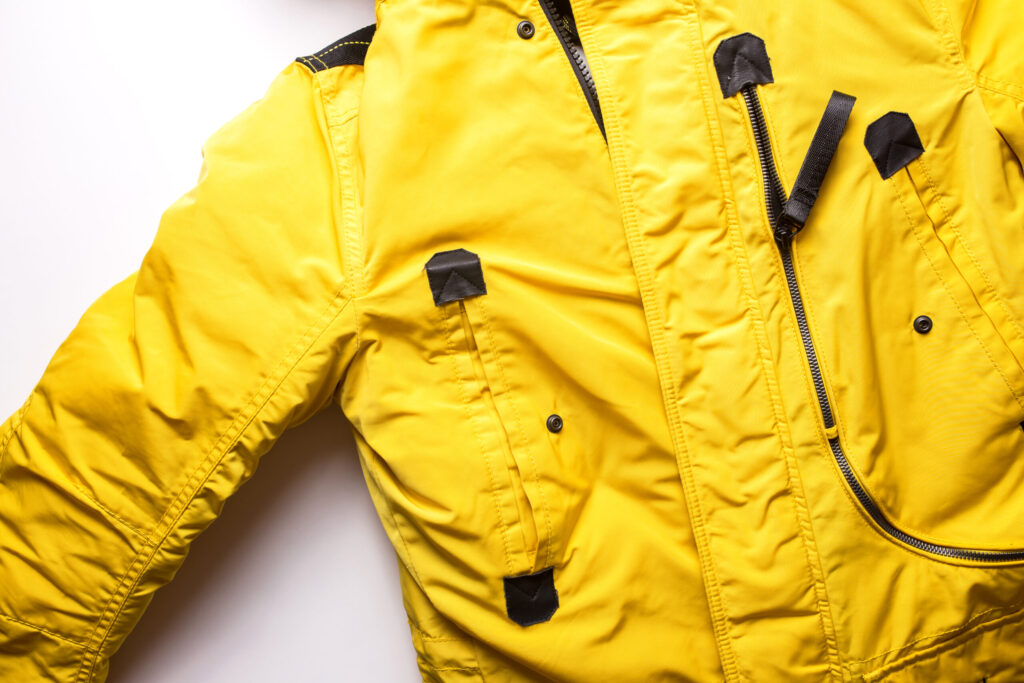
And what about flocked vinyl? The flocked vinyl uses a copolyester adhesive, different from that of flex vinyls. Although this adhesive is less smooth and elastic, it is easier to cut and has good adhesion on a wide variety of surfaces, including many considered problematic.
How to know which vinyl to use according to the fabric?
Before applying vinyl to an unknown fabric, it is ideal to perform a quick water test to assess whether the surface is hydrophilic or hydrophobic. Apply a drop of water onto the fabric and observe how it behaves:
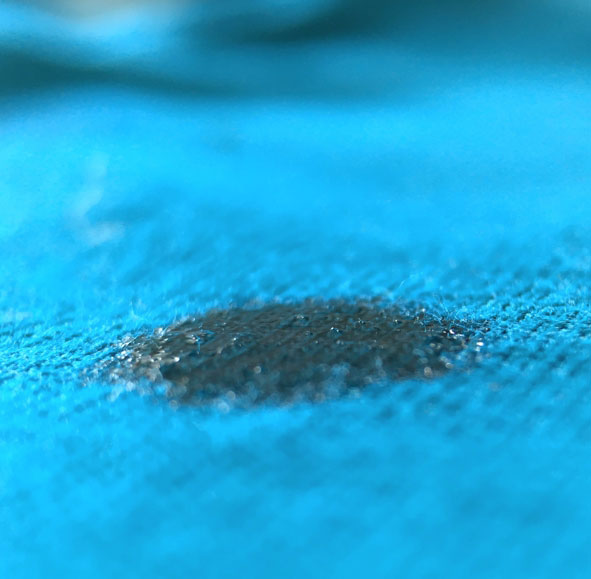
If the water disperses quickly upon falling on the fabric, it means it is hydrophilic and you can apply basic textile vinyl with polyurethane hotmelt adhesive.
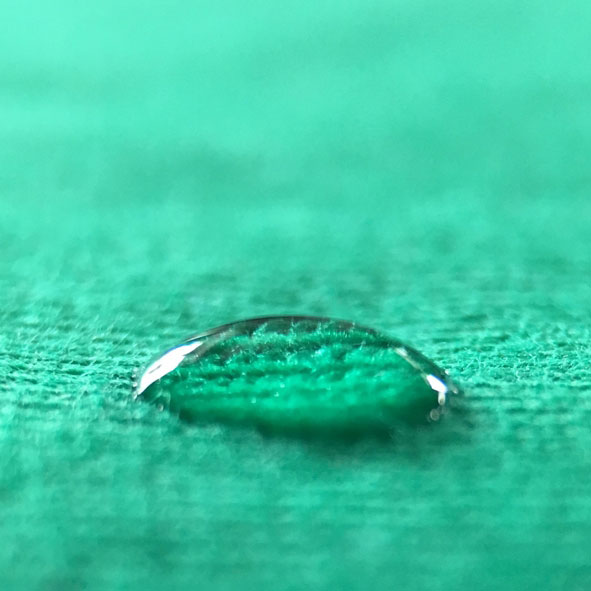
If the water remains on the fabric and forms a flatter droplet, the surface is also sufficiently hydrophilic. You can use the basic vinyl.
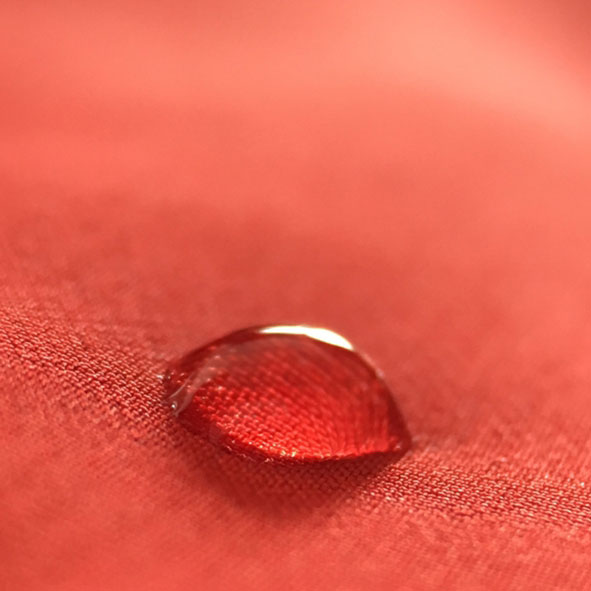
If the drop maintains a spherical shape on the fabric, it indicates a certain degree of water repellence. In this case, it is advisable to use special vinyl for nylon, with hotmelt adhesive of copolyamide or copolyester, designed to adhere to partially water-repellent surfaces.
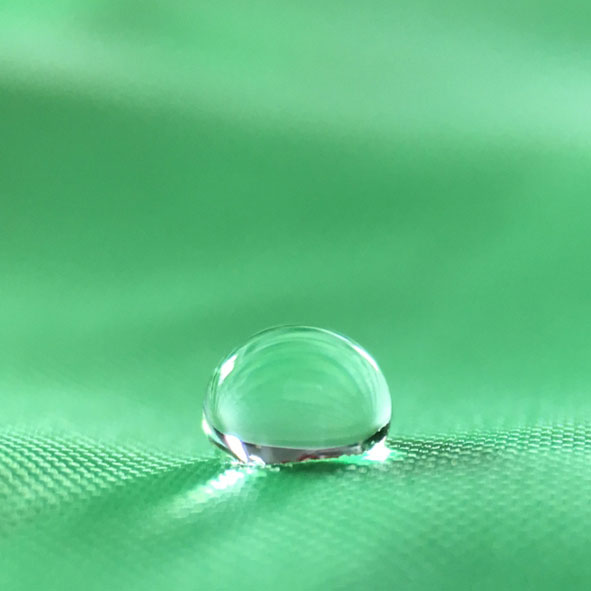
If the drop maintains a very round shape and rolls easily on the surface, the fabric has a highly water-repellent treatment and is not suitable for the application of textile vinyl. In this case, it is most advisable to use alternative techniques such as screen printing or embroidery.
💡 Additional tip: Some try to remove the treatment by ironing the fabric beforehand with absorbent paper or protective paper. This can help in certain cases, but it is not a guaranteed solution: it largely depends on the type of coating applied.
What if the vinyl peels off over time?
It may happen that, after correct application, the vinyl begins to peel off after a few weeks. This issue is not due to an error in ironing but to a phenomenon called adhesive recrystallisation.
When the vinyl cools down after application, the hotmelt adhesive is still in a soft and sticky state, allowing it to adhere even to hydrophobic surfaces. However, over the days, the adhesive molecules reorganise and reach their final state, which is more rigid and less adhesive. At that point, it loses grip on treated surfaces or those with low surface tension, and the vinyl may peel off.
🧪 Approximate recrystallisation times:
- Polyurethane (PU): 24 hours
- Copolyamide and copolyester: between 2 and 3 weeks
⚠️ There is no immediate way to detect this issue. The only way to verify the actual adhesion is to wait a reasonable amount of time after application.
Frequently Asked Questions
What is a problematic fabric for heat transfer vinyl?
It is a fabric that, due to its composition or treatment, hinders the proper adhesion of vinyl. They are usually waterproof, water-repellent, or technical synthetic fabrics.
How to know if a fabric has a water-repellent treatment?
Perform the water test: if the drop remains round or rolls off the surface, the fabric is water-repellent and may require a special vinyl.
What vinyl is recommended for nylon or waterproof fabrics?
Vinyls with hotmelt adhesive made of copolyamide or copolyester, designed for challenging surfaces such as treated nylon.
Why does a vinyl peel off after a few days?
Due to the recrystallisation of the adhesive, which reduces its grip on hydrophobic fabrics after 2-3 weeks. It is a common issue on treated surfaces.
Can the problem be solved by ironing beforehand?
In some cases, ironing the garment with protective paper helps to reduce the water-repellent layer. However, it is not a guaranteed solution and depends on the type of coating.
Applying heat transfer vinyl can become complicated depending on the type of fabric or its treatment. With these tips, you'll learn to identify which vinyl to use in each case and understand why some garments are not suitable for this technique.
Do you have any questions about the process or the most suitable material? Share them with us in the comments. Our team will be delighted to provide you with answers and assistance. You can also contact our Customer Service Department directly for additional help.
Remember that on our social media, we post a wealth of ideas, offers, and the latest news related to various personalisation techniques daily. To stay updated on everything, follow us on Instagram and TikTok. And don't forget to subscribe to our YouTube channel to continue learning with us!
WE WANT TO KNOW WHAT YOU THINK
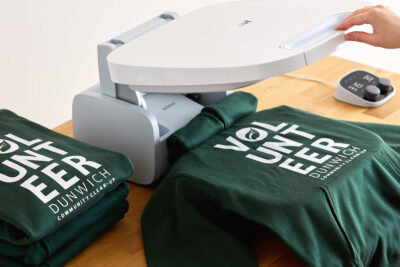
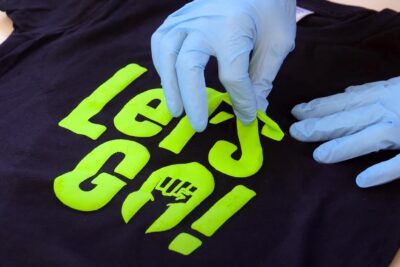
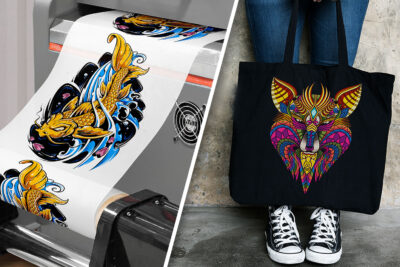
You may also like